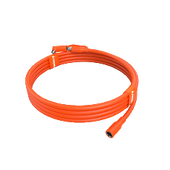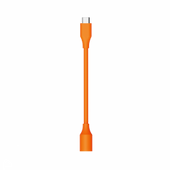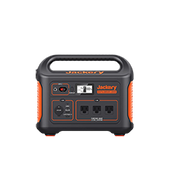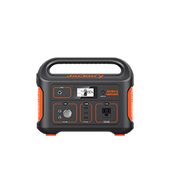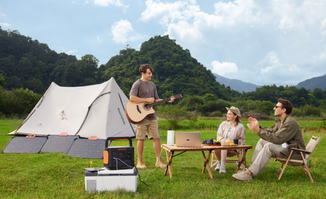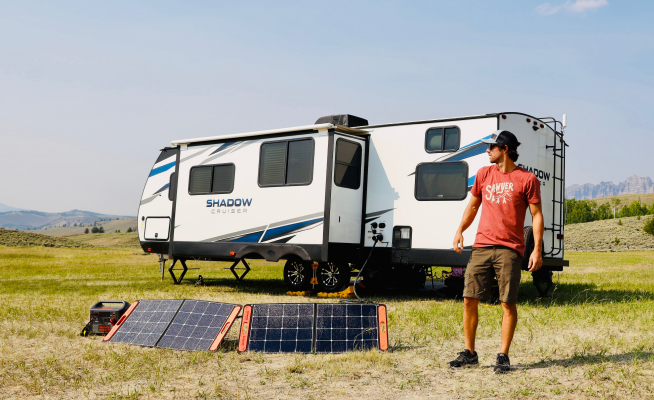What is Renewable Energy? | Types, Forms, Sources
Renewable energy is the energy produced from natural sources that replenish at a much higher rate than their consumption. With the growing climate concerns and the desire for eco-friendly solutions in Canada, the popularity and usage of renewable energy are skyrocketing. In fact, Canada is among the top countries showing a strong commitment to low-carbon energy sources. Owing to that, over two-thirds of Canada's electricity generation is based on renewable energy sources. Therefore, this article explores what renewable energy is, its types, forms, and other details, with a special emphasis on solar generator technology.
Types of Renewable Energy
Renewable energy refers to any natural energy source that can replenish naturally and has minimal impact on the environment. The common types of renewable energy are as follows:
1. Solar Energy
The sun is the most freely available energy source on the planet, making solar energy one of the easily utilizable renewable energy sources. Solar energy is harnessed through solar panels, which include photovoltaic (PV) cells. These cells absorb photons, trigger the flow of electrons, and generate direct current (DC) electricity. The DC electricity is then used to charge batteries or power AC appliances through an inverter.

Solar energy is commonly harnessed by installing numerous solar panels on the roof or setting up large-scale solar farms. However, advancements in solar technology have expanded its applications to other creative and innovative ways. Portable solar generator systems, for example, now enable access to solar power on the go. A typical solar generator system consists of portable solar panels and a portable power station. For instance, Jackery Solar Generator 1000 Pro includes two Jackery SolarSaga 80W Solar Panels and a Jackery Explorer 1000 Pro Portable Power Station. Its portable power station comprises a 1002Wh battery, a 1000W inverter, and multiple input/output ports in a single compact body.
Today, solar energy is one of the main contributors to increasing renewable capacity globally. Besides solar energy, the following types of renewable energy sources are also playing their roles.

2. Wind Energy
Wind energy is based on the concept of utilizing kinetic energy through wind turbines to generate electricity. Wind farms are often seen in places with consistent and strong winds.
Wind energy is harnessed through wind turbines, which comprise rotor blades, a tower, and a nacelle. Rotor blades capture the wind's kinetic energy and begin rotating accordingly. The nacelle, located at the top of the tower, houses all the crucial components, such as the generator, gearbox, and control systems. The tower provides height and stability.
When the rotor blades rotate, the wind's kinetic energy is transferred to the rotor shaft. The rotor shaft is connected to the gearbox inside the nacelle, which accelerates the rotational speed. This increased speed drives the generator and leads to the conversion of mechanical energy to electrical energy. This way, wind energy also offers a renewable energy source with minimal environmental impact.
3. Hydro Energy
Hydro energy is harnessed through the movement of water. A large reservoir is created by building a dam or barrier and using a controlled water flow to drive turbines. The turbines are placed underwater so that the movement of the water can rotate them and generate electricity.
Compared to solar and wind energy, hydro energy is a more reliable renewable energy source, but it requires a hefty investment and a proper location to create a large water reservoir. However, the stored water also provides other benefits, such as flood control and water supply for irrigation.
4. Geothermal Energy
Geothermal energy is the energy harnessed through the natural heat from the Earth's core. The Earth's core continuously produces heat due to the decay of radioactive materials. Geothermal reservoirs deep into the Earth's crust help extract the heat and generate electricity.
Geothermal power plants mostly use hot water or steam from underground to drive turbines and generate electricity. Besides generating electricity, geothermal energy is also used to heat homes.
5. Biomass Energy
Biomass energy is the energy harnessed by burning organic materials derived from animals and plants. The common biomass materials used for energy include wood, plants, and waste. It is a renewable energy source, as the organic materials used in it can be replenished or regrown.
To generate electricity from biomass energy, the organic material is burned in a special boiler or furnace. The heat released in this process generates steam, which flows through the turbine blades, making them rotate. The rotation of blades spins the generator and generates electricity. This way, the heat released by burning leads to electricity generation.
6. Tidal Energy
Tidal energy is another type of renewable energy, but it is less common. In fact, many will not include it when they are asked to talk about renewable energy.
Tidal energy is the energy harnessed by utilizing the power of ocean tides to generate electricity. It uses the rise and fall of tides caused by the gravitational forces of the sun and the moon to generate electricity.
Different types of systems are used to extract tidal energy, including tidal barrage systems, tidal stream systems, and tidal lagoon systems. Besides that, tidal energy is more predictable and reliable, as tidal patterns can be easily and accurately predicted.
Solar Energy in Canada
While looking at what renewable energy is, it is equally important to consider Canada's efforts in renewable energy. Canada has made remarkable steps in embracing renewable energy sources due to its diversified geography and abundance of renewable resources, such as water, wind, solar, etc.
Today, Canada stands as the world's second-largest producer of hydroelectricity. Moreover, solar and wind are also the fastest-growing electricity sources in Canada. In addition, the country has set the 2030 Emissions Reduction Plan to reach its emissions reduction target of 40% below 2005 levels and net-zero emissions by 2050.
Besides commercial-level deployment of renewable energy sources, the government is also promoting solar energy adoption at the individual level through different initiatives and policies. Some of the federal and provincial-level Canada renewable energy incentives for solar energy adoption are as follows:
- Greener Homes Rebate: A federal initiative that provides up to $5,000 for installing and running a ground or roof-mounted solar system.
- Greener Homes Loan: A federal initiative that provides homeowners with up to $40,000 in interest-free loans to purchase environmentally-friendly retrofits, such as solar panels and efficient furnaces.
- SolarHomes: A provincial initiative in Nova Scotia that allows Nova Scotian homeowners to ask for a rebate of $0.30/watt of installed solar panels for up to $3,000.
- Home Energy Retrofit Accelerator (HERA): A provincial initiative in Edmonton that allows homeowners to claim $0.40/watt for solar energy installations, covering up to around 15% of the upfront cost.
- Better Homes Ottawa Loan Program (BHOLP): A provincial initiative in Ottawa that provides up to $125,000 zero-interest loan for 20 years to meet the cost of installing a solar system or other home energy improvements.
Besides the above initiatives and rebates, dozens of other federal and provincial-level programs for home and commercial users in Canada make it much easier for Canadians to deploy renewable energy sources.
Canadians that have installed solar energy systems in their homes have witnessed many benefits, including:
- Renewable and clean energy
- Reduced electricity bills
- Energy independence
- Long-term savings
- Increase in property value
- Access to government incentives
- A sense of responsible citizenship
In short, there are numerous benefits of using solar energy. Therefore, everyone should set up solar systems or own solar generators to have an alternative and reliable power source in any situation.
When it comes to solar generators in Canada, Jackery is the leading and most trusted brand. Jackery solar generators are known for their compact size, feature-rich capabilities, and efficient performance in all types of situations. Its solar generators are available in various specs and power ratings. Below is a quick glimpse of the three top-notch Jackery solar generators:
1. Jackery Solar Generator 500
Jackery Solar Generator 500 is a 518Wh capacity, 500W (1000W surge peak) power solar generator. It includes one Jackery SolarSaga 100W Solar Panel and a Jackery Explorer 1000 Pro Portable Power Station to make a powerful solar generator.

Jackery Solar Generator 500 offers 7 outputs, including 1x AC, 2x DC, 3x USB-A, and 1x carport. Besides that, its battery is rechargeable in three ways: AC wall charging, solar panel, or a car DC port. The key features of Jackery Solar Generator 500 are as follows:
- 500W (1000W surge peak) power & 518Wh capacity
- 3 ways of recharging: AC, solar, and DC
- 7 output ports: 1x AC, 2x DC, 3x USB-A, and 1x carport
- Pure sine wave inverter
- Power almost all essential appliances, including laptops, blenders, TV, toaster, etc.
- 9 dB quiet operations
- Ultra-long standby of 472 days at 80%
- Top-notch safety with a battery management system and 8 temperature sensors
- Waterproof solar panels
- LED flashlight
- 2+1 years warranty
Overall, Jackery Solar Generator 500 is a perfect solar generator to power essential appliances anytime on the go.
2. Jackery Solar Generator 1000 Pro
Jackery Solar Generator 1000 Pro is a more powerful solar system that can power 93% of appliances. It comes with two Jackery SolarSaga 80W Solar Panels and a Jackery Explorer 1000 Pro Portable Power Station.
It offers a massive battery capacity of 1002Wh and a power output of 1000W (2000W surge peak). The best part about this solar generator is its operating usage temperature of 14-104°F (-10-40℃) and a full-charge time of just 1.8 hours. The key features of Jackery Solar Generator 1000 Pro are as follows:
- 1000W (2000W surge peak) power & 1002Wh capacity
- 3 ways of recharging: AC, solar, and DC
- 8 output ports: 3x AC, 1x car DC port, 2x USB-A, and 2x USB-C
- Pure sine wave inverter
- Power 93% of appliances
- 46 dB quiet operations
- Operating usage temperature of 14-104°F (-10-40℃)
- Top-notch safety with 12 layers of protection
- Waterproof and weather-resistant solar panels
- LED flashlight
- 10 years battery life
- 3+2 years warranty
Overall, Jackery Solar Generator 1000 Pro serves as a universal solar generator that can fulfill household power needs for extended hours, both indoors and outdoors.
3. Jackery Solar Generator 3000 Pro
When the solar system has to power almost any small to high-power-consuming appliance, Jackery Solar Generator 3000 Pro comes into action. With a large 3024Wh battery capacity, 3000W power output, and 10 output ports, it is packed with everything to be an ideal power supply for home, camping, or RV living.

Jackery Solar Generator 3000 Pro comes with two Jackery SolarSaga 100W Solar Panels and a Jackery Explorer 3000 Pro Portable Power Station. Its gigantic 3024Wh battery is chargeable in 6-7.5 hours with solar panels or 2.4 hours with wall charging. Moreover, it includes a pull rod and double wheels for easy carrying. The key features of Jackery Solar Generator 3000 Pro are as follows:
- 3000W power & 3024Wh capacity
- 3 ways of recharging: AC, solar, and DC
- 10 output ports: 5x AC, 1x car DC port, 2x USB-A, and 2x USB-C
- Pure sine wave inverter
- Power 99% of appliances, including microwave, air conditioner, refrigerator, etc.
- Smart app for easy accessibility and control
- Operational usage temperature: -4-104°F (-20-40℃)
- Top-notch safety with 12 layers of protection
- Waterproof and weather-resistant solar panels
- 3+2 years warranty
Overall, Jackery Solar Generator 3000 Pro is an all-in-one solar generator that can power all imaginable appliances for hours with utmost efficiency.
Advantages of Renewable Energy
Renewable energy is the best alternative to traditional energy sources and is incredibly environmentally friendly. It offers a sustainable solution to address the deteriorating state of our planet. In fact, the amount of renewable capacity is projected to grow by 50% during 2021-2026 compared to the 2015-2020 period.
Now that we know what renewable energy is all about, let's explore the key benefits it has to offer:
1. Reduced Greenhouse Gas Emissions
If we have to answer what renewable energy's most dominant benefit is, then it would be reduced greenhouse gas emissions. When fossil fuels are burned, they emit many greenhouse gases, such as carbon dioxide, methane, nitrous oxide, etc. These gases contribute significantly to air pollution and climate change. In contrast, solar, wind, hydro, or other types of renewable energy sources emit almost no greenhouse gases, saving the environment and the planet.
2. Climate Change Mitigation
Renewable energy is the key to mitigating climate change. All renewable energy sources are based on natural sources that replenish much faster than their consumption. Moreover, they decrease the carbon footprint and reduce dependence on finite resources. Overall, renewable energy sources play a crucial role in limiting global warming, extreme weather events, and sea-level rise.
3. Long-Term Economic Advantages
Renewable energy sources require an initial investment, as setting up wind turbines, building dams, and similar others require a significant budget. However, renewable energy provides long-term financial and economic advantages. Besides being a cheap electricity source, renewable energy also diversifies energy sources and reduces dependence on depleting fossil fuel energy sources.
4. Energy Independence and Security
Renewable energy empowers individuals, businesses, and countries to have energy independence and security. From a country's perspective, renewable energy sources help reduce fossil fuel imports and utilize local renewable resources. Similarly, individuals and businesses can install solar generator systems to generate their own clean energy, regardless of location.
5. Improved Public Health
Renewable energy is clean energy free from greenhouse gases and pollutants. When coal or oil is burned, it emits harmful pollutants, leading to health issues. However, renewable energy promises clean and sustainable energy that reduces air and water pollution, leading to improved public health.

With the growing climate concerns, understanding what renewable energy is has become essential for everyone. This article has presented the various types of renewable energy sources and Canada's commitment to promoting renewable sources. However, it is also important for us to embrace renewable energy solutions to not just support the transition to renewable energy but also reduce our dependence on grid supplies. Therefore, devices like solar generators are best for utilizing renewable energy conveniently. For Canadians, Jackery provides a one-stop place to easily find the best solar generator for our power needs. To sum up, the time has come when we all play our role and support the transition to a sustainable energy future.
Disclaimer:
The runtime mentioned for appliances powered by Jackery is for reference only. Actual runtime may vary under different conditions. Please refer to real-world performance for accurate results.









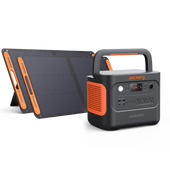

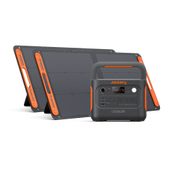
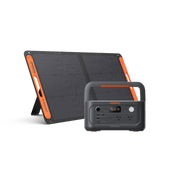
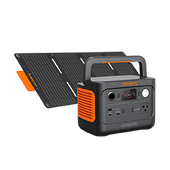


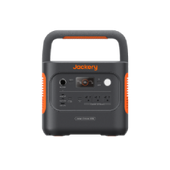
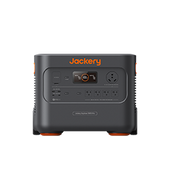
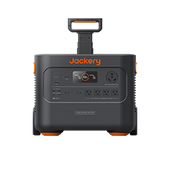

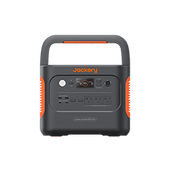
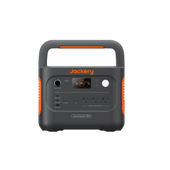
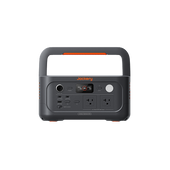

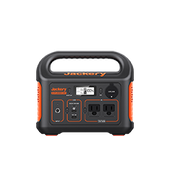
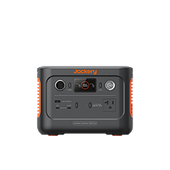

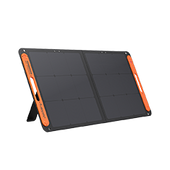

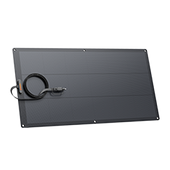
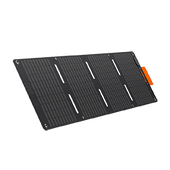
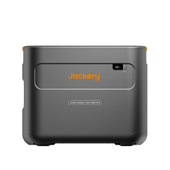
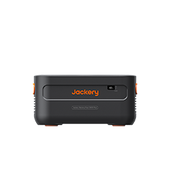
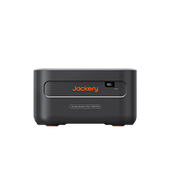
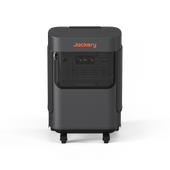
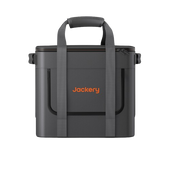

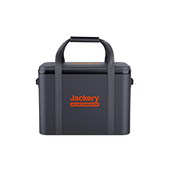
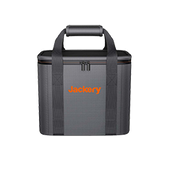
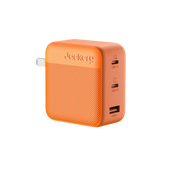
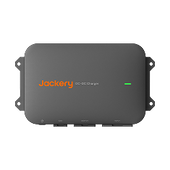
![[Add-on] Jackery Manual Transfer Switch for Explorer 5000 Plus](http://ca.jackery.com/cdn/shop/files/add-on-jackery-manual-transfer-switch-for-5000-plus-240V.webp?v=1757043692&width=170)
